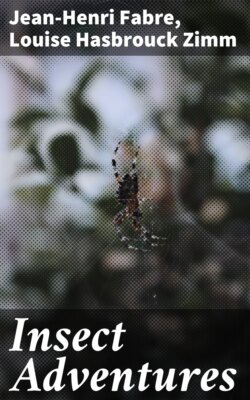Читать книгу Insect Adventures - Fabre Jean-Henri - Страница 14
На сайте Литреса книга снята с продажи.
THE RED ANTS
ОглавлениеTable of Contents
Among the treasures of my piece of waste ground is an ant-hill belonging to the celebrated Red Ants, the slave-hunting Amazons. If you have never heard about these Ants, their practices seem almost too wonderful to believe. They are unable to bring up their own families, to look for their food, to take it even when it is within their reach. Therefore they need servants to feed them and keep house for them. They make a practice of stealing children to wait on the community. They raid the neighboring ant-hills, the home of a different species; they carry away the Ant-babies, who are in the nymph or swaddling-clothes stage, that is, wrapped in the cocoons. These grow up in the Red Ants’ house and become willing and industrious servants.
When the hot weather of June and July sets in, I often see the Amazons leave their barracks of an afternoon and start on an expedition. The column is five or six yards long. At the first suspicion of an ant-hill, the front ones halt and spread out in a swarming throng, which is increased by the others as they come up hurriedly. Scouts are sent out; the Amazons recognize that they are on a wrong track; and the column forms again. It resumes its march, crosses the garden paths, disappears from sight in the grass, reappears farther on, threads its way through the heap of dead leaves, comes out again and continues its search.
At last, a nest of Black Ants is discovered. The Red Ants hasten down to the dormitories, enter the burrows where the Ant-grubs lie and soon come out with their booty. Then we have, at the gates of the underground city, a bewildering scrimmage between the defending Blacks and the attacking Reds. The struggle is too unequal to remain in doubt. Victory falls to the Reds, who race back home, each with her prize, a swaddled baby, dangling from her jaws.
I should like to go on with the story of the Amazons, but I have no time at present. Their return to the nest is what I am interested in. Do they know their way as the Bees do?
Apparently not; for I find that the Ants always take exactly the same path home that they did coming, no matter how difficult it was or how many short cuts might be taken. I came upon them one day when they were advancing on a raid by the side of a garden pond. The wind was blowing hard and blew whole rows of the Ants into the water, where the Fish gobbled them up. I thought that on the way back they would avoid this dangerous bit. Not at all: they came back the same way, and the Fish received a double windfall, the Ants and their prizes.
As I had not time to watch the Ants for whole afternoons, I asked my granddaughter Lucie, a little rogue who likes to hear my stories of the Ants, to help me. She had been present at the great battle between the Reds and the Blacks and was much impressed by the stealing of the long-clothes babies, and she was willing to wander about the garden when the weather was fine, keeping an eye on the Red Ants for me.
One day, while I was working in my study, there came a banging at my door.
“It’s I, Lucie! Come quick: the Reds have gone into the Blacks’ house. Come quick!”
“And do you know the road they took?”
“Yes, I marked it.”
“What! Marked it? And how?”
“I did what Hop-o’-My-Thumb did: I scattered little white stones along the road.”
I hurried out. Things had happened as my six-year-old helper had said. The Ants had made their raid and were returning along the track of telltale pebbles. When I took some of them up on a leaf and set them a few feet away from the path, they were lost. The Ant relies on her sight and her memory for places to guide her home. Even when her raids to the same ant-hill are two or three days apart, she follows exactly the same path each time. The memory of an Ant! What can that be? Is it like ours? I do not know; but I do know that, though closely related to the Bee, she has not the same sense of direction that the Bee possesses.
